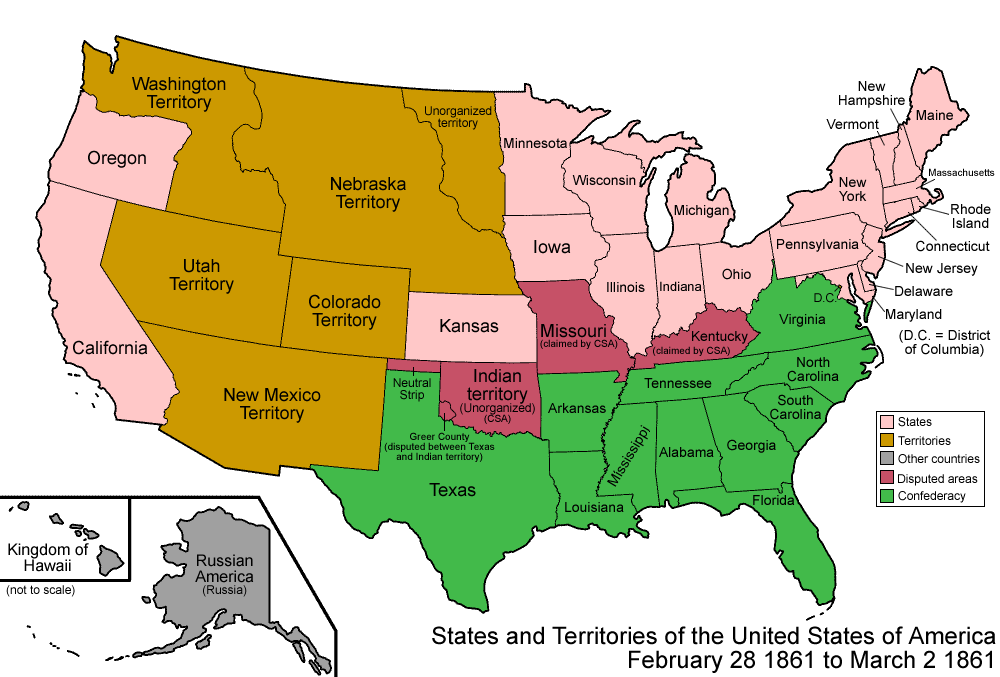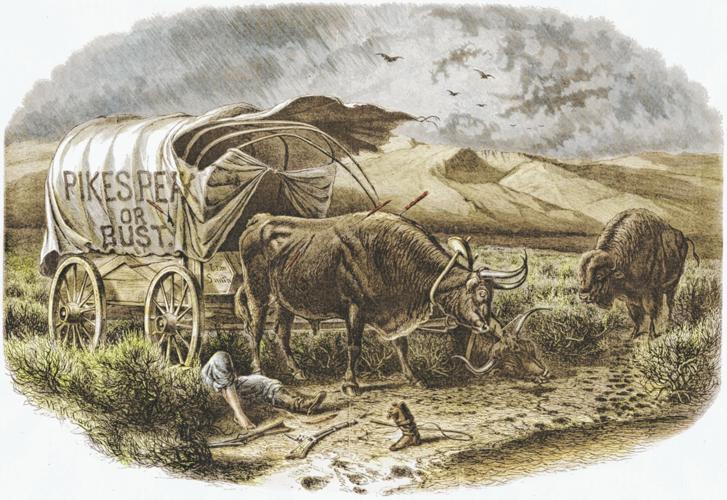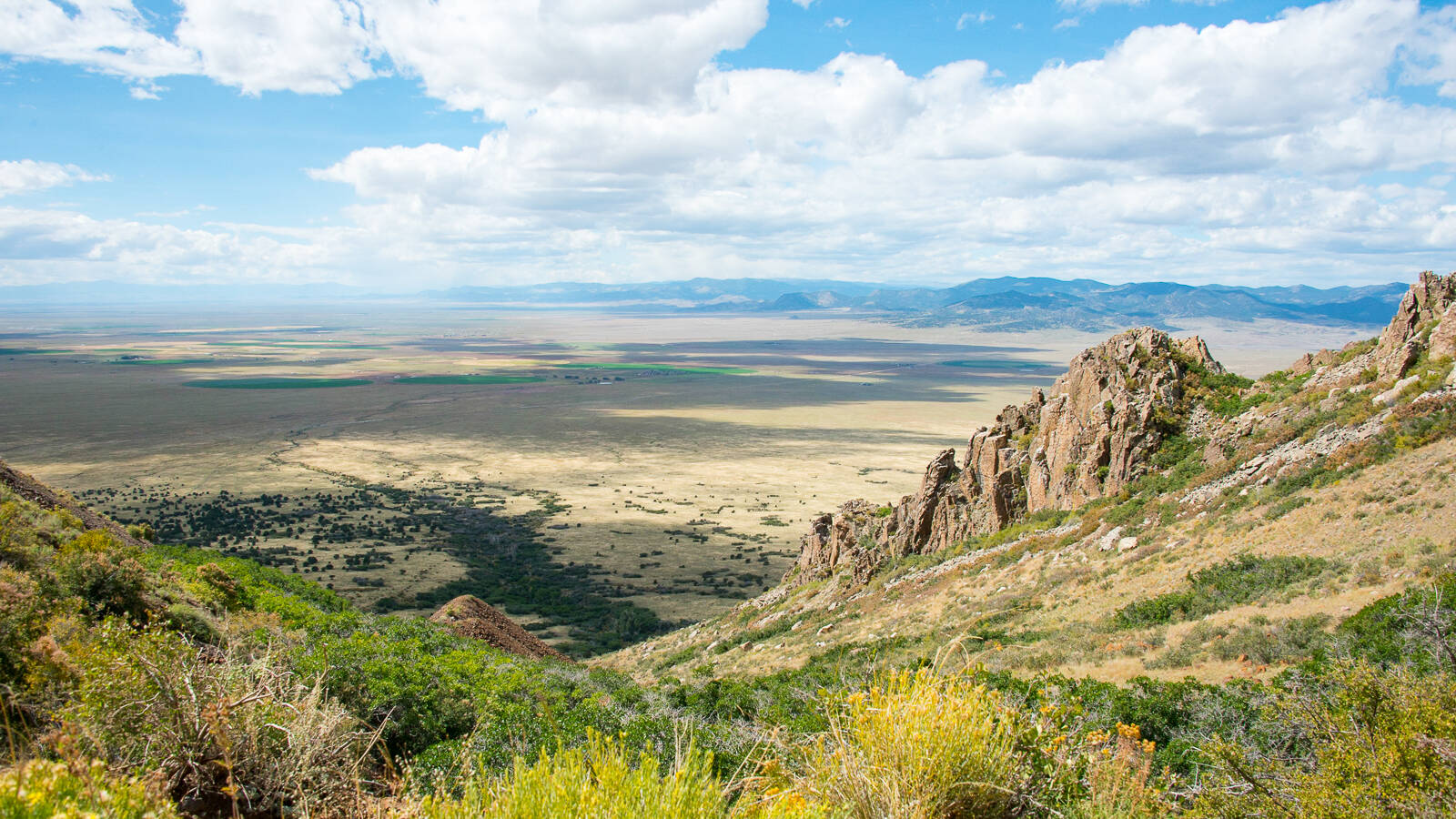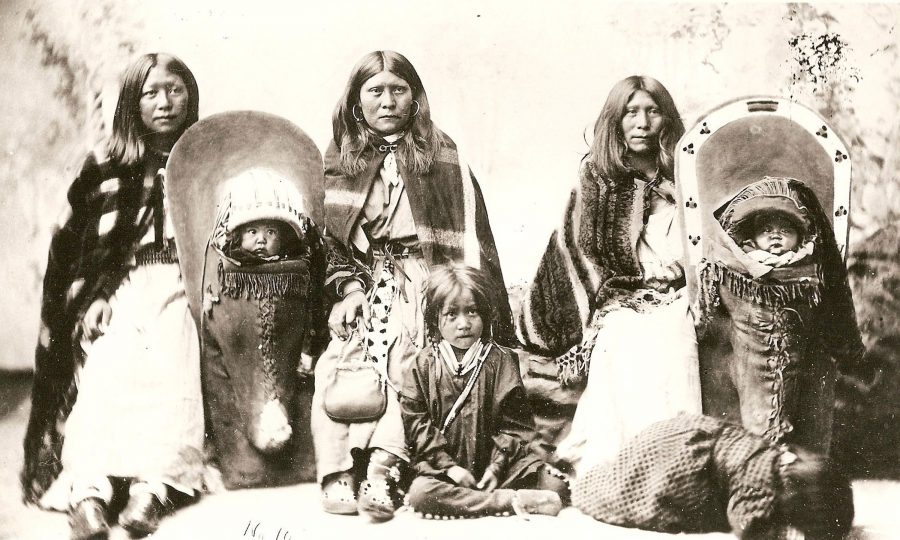What is the highest peak in Colorado?

Mount Elbert
Mount Elbert is the highest summit of the Rocky Mountains of North America. With an elevation of 14,438 feet, it is also the highest point in the U.S. state of Colorado and the second-highest summit in the contiguous United States after Mount Whitney, which is slightly taller. (14,505)
What year was Colorado established as a territory?

1861
The Colorado Territory was created on February 28, 1861, with the signing of the Colorado Organic Act by President James Buchanan. This act organized the territory from parts of existing territories, including Kansas, Nebraska, New Mexico, and Utah.
In what year did Colorado become a state?

1876
On August 1, 1876, Colorado became the 38th State to enter the Union under the flag of the United States.
What precious metal was discovered in Colorado that led to the Gold Rush?

Gold
Who was the famous socialite, activist, businesswoman, and mine owner known as "The Unsinkable Molly Brown?" (She was also a survivor of the Titanic)

Margaret Brown
Margaret "Molly" Brown was famously known as "The Unsinkable Molly Brown" after surviving the sinking of the RMS Titanic in 1912. Beyond her survival, she was also a socialite, philanthropist, and activist who worked to improve conditions for women, children, and workers. Fun Fact: She never actually went by the name Molly, and you can still visit her house in Denver today!
Name the river that runs through Denver?

The South Platte River
The South Platte River is crucial to Colorado because it's a primary source of water for eastern Colorado, supports a vital ecosystem, and is a major source of drinking water, irrigation, and recreation for many residents. It also plays a vital role in supporting the Central Flyway, a major migration route for birds.
Which two states border Colorado to the south?

New Mexico and Oklahoma
What nickname is Colorado known by due to its statehood year?
The Centennial State
Colorado is called the "Centennial State" because it became a state on August 1, 1876, which was exactly 100 years after the signing of the Declaration of Independence. This marked the 100th anniversary of the nation's founding and solidified its nickname.
Name the famous mining town that became a ghost town after the gold ran out.

St. Elmo
St. Elmo is widely considered Colorado's most famous and well-preserved gold rush ghost town. Established in 1880, it once thrived as a mining community, home to over 2,000 residents, but declined after mines were depleted. Today, St. Elmo remains a popular tourist destination, with many of its original buildings still standing.
This woman was known for her ownership of mines and her "wild" lifestyle? She was alive from 1854-1935.

ELIZABETH “BABY DOE” McCOURT TABOR
Baby Doe Tabor, born as Elizabeth McCourt in 1854, was an important figure in Colorado history, known for her connection to the famous silver baron Horace Tabor. She gained the nickname "Baby Doe" because of her youthful appearance and charming personality. After marrying Horace Tabor, who was much older than her, she became a prominent socialite in Denver. The couple was known for their lavish lifestyle, especially during Colorado's silver boom in the late 1800s. However, when silver prices crashed, their fortune dwindled, and Baby Doe faced many hardships. Even in tough times, she remained strong and resilient, eventually living in a small cabin near the Matchless Mine, which her husband had once owned. Baby Doe Tabor is remembered not only for her role in Tabor's life but also for her spirit and determination during challenging times.
What major national park is located in Colorado?

Rocky Mountain National Park
With abundant wildlife, 100+ lakes, over 350 miles (560km) of hiking trails, roads that take you to the top of the mountains, and all the amenities you need just outside the park boundaries, Rocky has everything you need for an amazing vacation whether you are by yourself, with that special loved one, or with the extended family.
What was the primary purpose of the Colorado Territory when it was first created?
Hint: ______ Expansion (where is Colorado?)

To promote westward expansion.
Westward expansion refers to the movement of settlers, institutions, and culture across the American continent, primarily from the 19th century, from the 13 original colonies to the Pacific Ocean. This period involved acquisition of vast territories through purchase, treaties, and war, leading to significant societal, economic, and environmental changes.
What major event in 1859 led to a population surge in Colorado?

The Pike's Peak Gold Rush
The Pikes Peak Gold Rush, also known as the Colorado Gold Rush, was a large influx of gold prospectors and settlers into the Rocky Mountains in the 1850s, primarily between 1858 and 1859. It led to the rapid development of cities like Denver and Colorado City, and eventually contributed to Colorado's statehood.
Which industry significantly contributed to Colorado's economy in the late 1800s?

Mining
What Chinese American was known for his language and business skills. He immigrated to the United States and started his career by working on the railroad.

Chin Lin Sou
Chin Lin Sou was a notable Chinese immigrant who played an important role in Colorado's history during the late 19th century. After moving to the United States, he settled in Denver, where he became a successful businessman. Sou opened a laundry, which was a common occupation for many Chinese immigrants at the time, and he quickly gained a reputation for his hard work and dedication. In addition to running his business, he also contributed to the local community by helping other Chinese immigrants find jobs and establish their own businesses. His efforts not only helped to create a supportive network for the Chinese community but also highlighted the rich cultural diversity of Colorado during a time of rapid growth and change. Today, Chin Lin Sou is remembered for his contributions to the state's history and the lasting impact he had on the community.
What desert is found in Colorado?

The San Luis Valley
The San Luis Valley is a region in south-central Colorado with a small portion overlapping into New Mexico. The valley is approximately 122 miles long and 74 miles wide, making it the largest alpine valley in the world. It extends from the Continental Divide on the northwest rim into New Mexico on the south.
Who was the first governor of the Colorado Territory?

William Gilpin - Gilpin County was named after him!
William Gilpin, the first governor of the Colorado Territory in 1861-1862, was born in Pennsylvania on October 4, 1813. After two years of education in England, he returned to his home state to attend the University of Pennsylvania. In 1836, Gilpin graduated from the United States Military Academy.
What city is the capital of Colorado?

Denver
What was the name of the event where miners protested for better working conditions in 1914?

The Ludlow Massacre
On the morning of April 20, National Guardsmen aligned with the Colorado Fuel & Iron Company attacked the Ludlow Tent Colony to try and break the UMWA strike, killing 21 people (including 11 children) in what became known as the “Ludlow Massacre.” This act of collective violence ignited 10 days of continuous warfare in Colorado, until President Woodrow Wilson ordered Federal troops to disarm both sides and restore order.
This person believed that everyone had the right to an education. She founded a school in Denver that was focused on everyone, which helped make this possible for many people in Denver

Emily Griffith
Emily Griffith was an influential figure in American education, best known for her dedication to providing opportunities for all students, regardless of their background. Born in 1868 in Ohio, she moved to Colorado, where she became a teacher and later founded the Emily Griffith Opportunity School in Denver in 1916. This school was unique because it aimed to help individuals of all ages and backgrounds gain skills and education that would lead to better job opportunities. Griffith believed in the importance of education for everyone, including immigrants and those who had not completed traditional schooling. Her work has had a lasting impact on education in Colorado, and she is remembered as a pioneer who fought for equal access to learning and vocational training.
Name the two mountain ranges located in Colorado. (Double Points)

The Rocky Mountains and Sangre De Cristo Mountains
The Rocky Mountains are a vast, extensive mountain range spanning across western North America, from Canada to New Mexico, while the Sangre de Cristo Mountains are a specific subrange within the Southern Rocky Mountains, located primarily in Colorado and northern New Mexico. In essence, the Sangre de Cristo Mountains are a part of, or a section of, the larger Rocky Mountain system.
Which Native American tribes originally inhabited the Colorado region? (Double Points for both)


The Ute and the Cheyenne Arapaho
What significant transportation route was completed in 1887, connecting Colorado to the national rail network?
The Denver and Rio Grande Railroad
The Denver and Rio Grande Western Railroad (D&RGW) was a major American railroad that operated from 1870 to 1988, primarily connecting Denver to Salt Lake City. It was originally built as a narrow-gauge line, but later converted to standard gauge. The D&RGW played a key role in the development of Colorado and Utah, transporting passengers, freight, and coal, particularly between Denver and the mining regions.
What mineral was commonly mined in the Cripple Creek area?
Silver
Cripple Creek has a varied and rich history and is the site of the last and greatest mining boom in the state of Colorado, attracting thousands of hopeful miners to the western side of Pikes Peak in the 1890s. From a boom town to a ghost town to a gambling town, Cripple Creek has endured both triumphs and devastations in its 150-year history.
This famous Coloradan was an important Chicano activist, fighting for justice for all Coloradans. He was also a well known boxer.

RODOLFO “CORKY” GONZALES
Rodolfo "Corky" Gonzales was a prominent activist and poet known for his significant contributions to the Chicano civil rights movement in the United States during the 1960s and 1970s. Born in 1928 in Denver, Colorado, Gonzales grew up in a Mexican-American family and experienced the challenges faced by his community. He became a vocal advocate for the rights of Chicanos, working to address issues such as discrimination, education, and labor rights. Gonzales founded the Crusade for Justice, an organization dedicated to promoting the interests of Chicanos and empowering them to fight for their rights. He is also famous for his poem "I Am Joaquin," which captures the struggles and pride of the Chicano identity. Through his activism and literary work, Gonzales inspired many and left a lasting legacy in the fight for social justice and equality.